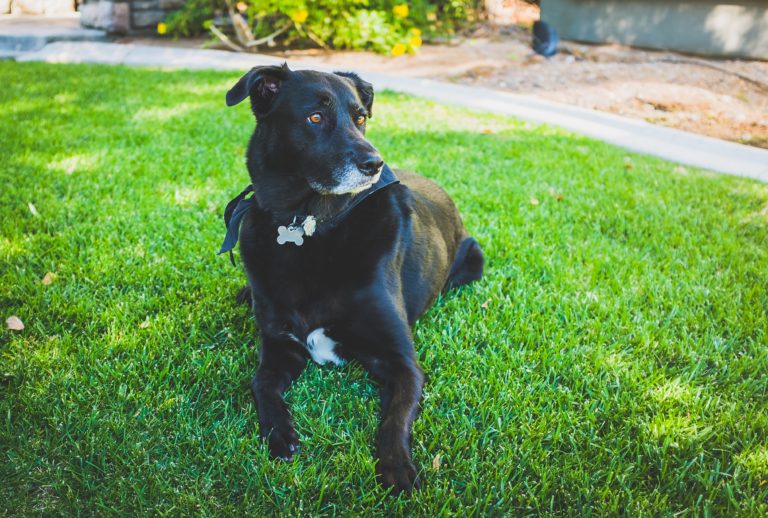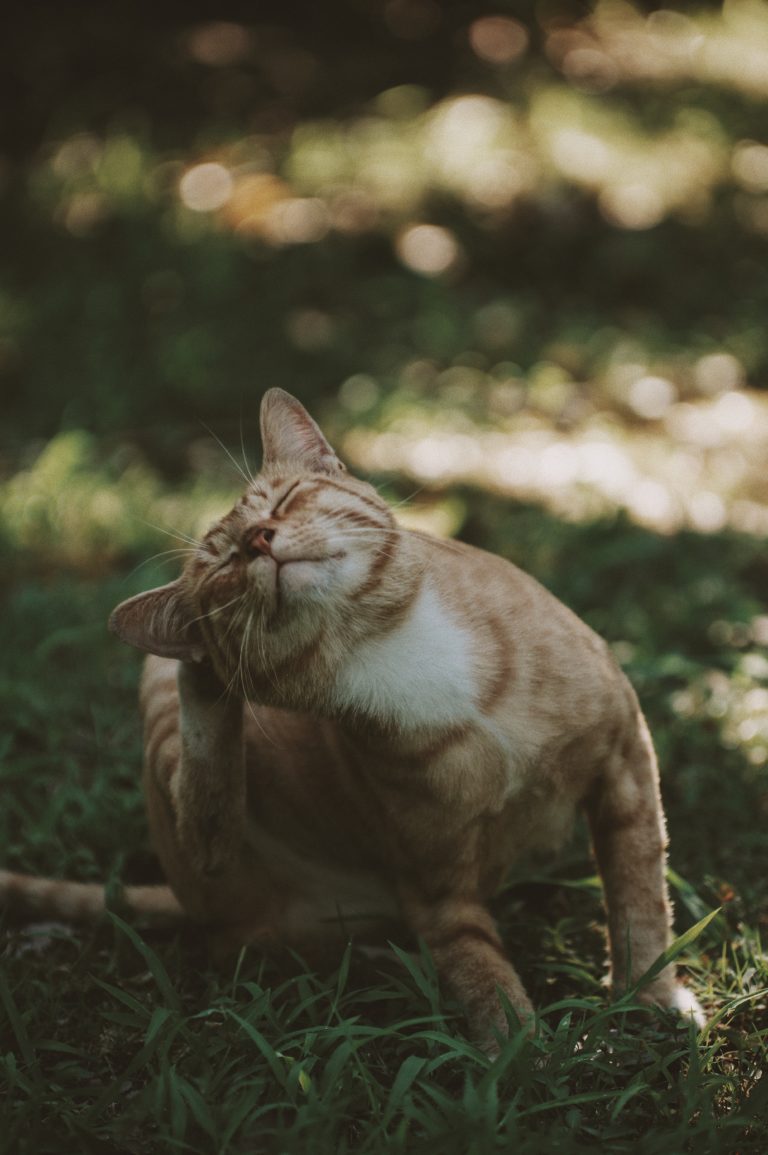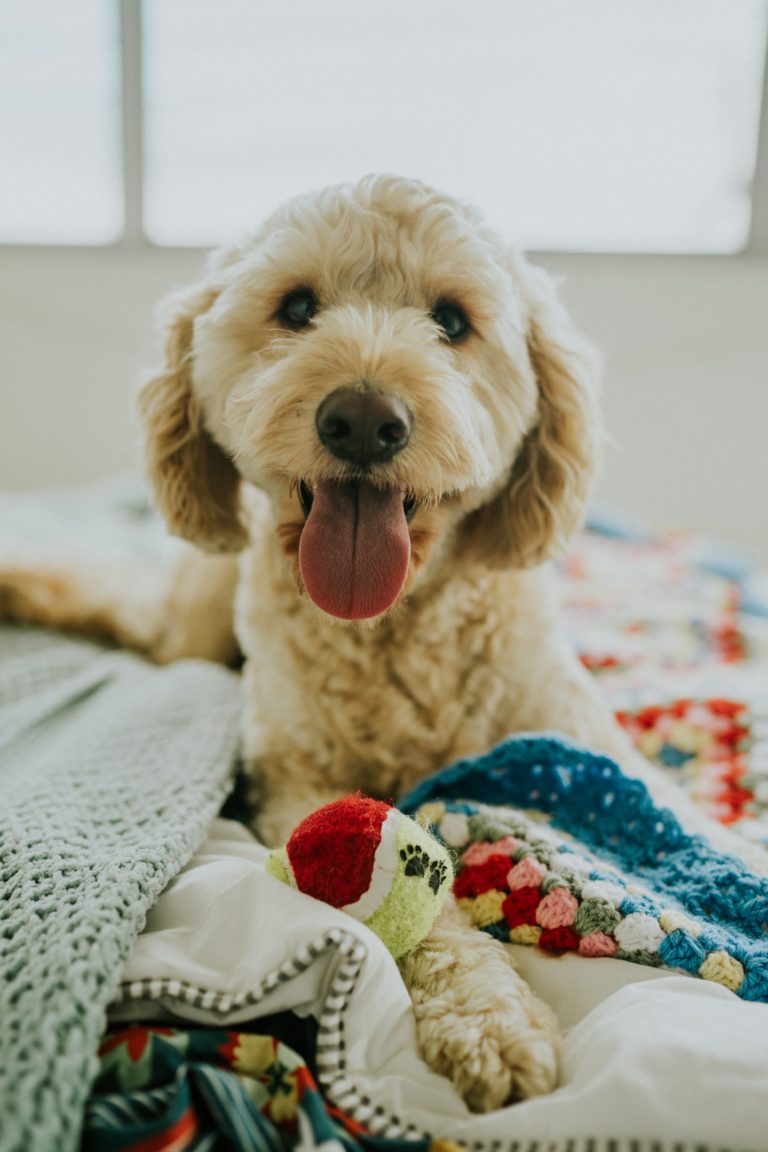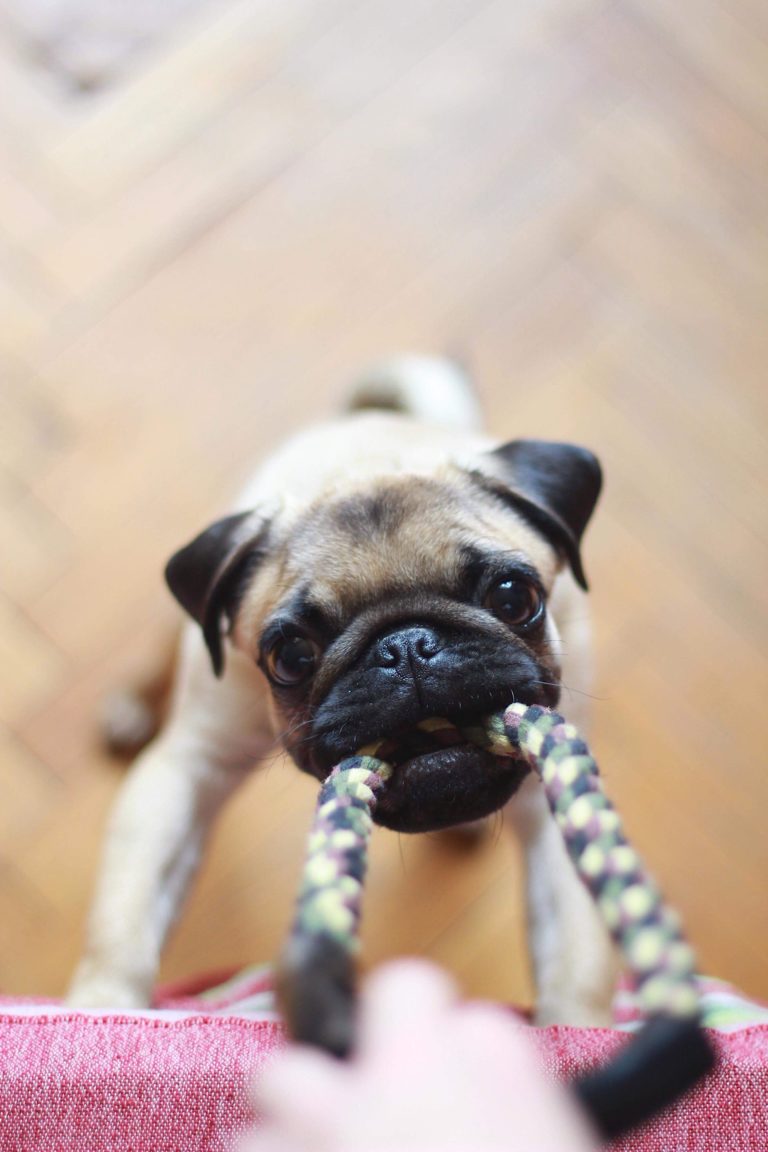

Once a rare condition in the UK, reported cases of Lungworm and resulting fatalities are on the rise. It’s important therefore that pet owners are aware of the signs and symptoms and take steps wherever possible to prevent an infection.
What Is Lungworm?
Lungworm is an infection caused by the roundworm parasite. Slugs and snails carry the lungworm larvae and pets can become infected when they play with or consume them. Eating grass, drinking from puddles and outdoor water bowls or playing with toys that have been left outside in the grass can also cause exposure as the larvae can remain in the slime trail left by slugs and snails. Frogs can also act as hosts to the parasite
Does It Affect Dogs or Cats?
Lungworm can affect both cats and dogs but cat lungworm and dog lungworm are not the same parasite and feline lungworm is usually less severe than its canine counterpart.
Feline lungworm can be found in the lung tissues, unlike the dog lungworm which actually lives mainly in the heart. Like the canine version, interaction with slugs and snails can mean exposure to the parasite but it also lives inside birds and small mammals such as mice. This means that cats are at risk of picking up feline lungworm when they hunt.
Foxes can also carry lungworm and the parasite can be present in their faeces.
How Do I Know If My Pet Has Lungworm?
Many dogs won’t initially show symptoms and it therefore may go unnoticed for some time but these are some signs to watch out for:
Most cats show few or no signs however in animals that do, especially young kittens, lungworm can be fatal. The most common signs of cat lungworm infection are:
How Can I Prevent My Pet From Getting Lungworm?
If you suspect your pet may have lungworm, to purchase preventative treatment or for any other concerns you may have regarding your pet, please contact us.
St Kitts Veterinary Centre: 01252 844044
Basingstoke Veterinary Centre: 01256 844944
Crookham Park Veterinary Centre: 01252 913990
Firgrove Veterinary Centre: 01252 877799

For all the latest practice news and health information, check out our newsletter in the link below!

If you are adopting a new cat or kitten, you should bear in mind that a change in home environment can be a stressful time for a feline. Even the most confident kitten can be spooked but unusual noises, so it can often take a cat or kitten a few weeks to fully settle into their new home.
By following these tips you can ensure that the process is as stress free as possible for all involved.
Provide A Safe Room
It’s important that you have your home ready to receive your new addition in advance of them coming home for the first time. Allocate a room, one that is secure, quiet and contains everything they need such as:
Settling in
When you first arrive home, put your cat carrier in the allocated ‘safe’ room and open it up. Allow the cat or kitten to explore their new environment in their own time to help ease any anxiety. If an adult cat seems especially nervous, it may be beneficial to leave the room for a while.
If it’s a kitten that you have adopted, don’t leave them alone until you are certain they can’t become trapped or hurt themselves in their new environment. Sit with them and encourage them to explore.
Newly adopted cats and kittens will soon find a hiding place and may refuse to come out. This is completely normal. Do not force them out, just leave fresh food and perhaps some treats nearby for them, ensure the litter tray is accessible and give them some space. Pop back in from time to time, maybe sit with them for a while and talk to them. This will help them get used to your voice and your scent.
A pheromone-emitting plug in such as Feliway can help a cat feel more comfortable too.
Exploring Further Afield
Once your new addition is showing signs of becoming more confident, you can start to allow them to explore the rest of the house. Keep things calm and quiet. Ensure the house is safe – make sure all windows, external doors and cat flaps are closed, toilet lids are down and chimneys are blocked off. Allow them to explore their new home in their own time.
If yours is to be an outdoor cat, the next step is to introduce them to the garden. A newly adopted cat should ideally be kept inside for two weeks to help establish that your house is their new home and a kitten should not be allowed outside until a week after their vaccinations.
Before allowing them outside you should ensure that:
It’s a good idea to accompany your cat and especially your kitten outside at first to provide encouragement and reassurance.
Introducing Your New Cat To Your Resident Cat
Introducing cats to one another can be a tricky business and needs to be handled in the right way. It should never be rushed and can sometimes take weeks and weeks for cats to accept one another, depending on the temperament of the cats and their previous experiences. A bad start can lead to a lifetime of problems and conflict. Follow this advice to help your cats to bond.
After any signs of aggression have stopped, this can then be progressed to meeting at mealtimes. The cats should be fed at the same time but their feeding areas should be at opposite sides of the room. Some growling and hissing should be expected at this point as they have to establish a pecking order but if a conflict is looking likely, separate them and try again when they are both calm.
Gradually build up the amount of time the cats spend in each other’s company so that neither animal becomes fearful or aggressive, although mild forms of this behavior is to be expected. Don’t leave them alone together unattended (e.g. at night) until they have fully accepted each other.
Because of the nature of cats, some aggression may still remain in spite of your best efforts and if this is the case it’s important to ensure that each cat has space away from the other. This includes separate eating areas and litter trays.
Introducing Your New Cat To Your Dog
The introductory phases are the same for introducing your new cat to a resident dog. Slowly and patiently is the way to help ensure a good bond is achieved.
If introductions don’t go smoothly, consult a professional. Animals can be badly hurt in fights and the longer the problem exists, the less likely it is that it will be resolved.
If you have any concerns over settling in a new pet, need advice on neutering or vaccinations or have any other worries regarding your pet, please contact us.
St Kitts Veterinary Centre: 01252 844044
Basingstoke Veterinary Centre: 01256 844944
Crookham Park Veterinary Centre: 01252 913990
Firgrove Veterinary Centre: 01252 877799

The sunshine makes us all feel better but when the heat rises and we all spend more time outside, we need to pay special care and attention to our pets.
Keep your furry friends safe and happy by following this advice
Look Out For Insect Bites and Stings
Wasps and bees can be inviting for a curious cat or dog to play with, hence stings are quite common. If your pet displays symptoms of discomfort such as a swelling, limping or drooling, it’s worth checking them over for signs of a sting.
Some cats and dogs can be allergic to bee or wasp stings, just like we can. If your pet has an allergic reaction, they can have more severe symptoms:
If your pet has an allergic reaction to a bee or wasp sting, it’s vital you get them to your vet as soon as possible.
If your pet is showing signs of swelling around the mouth or throat area, don’t try to treat this at home. Go and see your vet immediately.
If the sting is anywhere else, follow this advice:
Bee Stings – The sting will usually be visible and needs to be removed with tweezers. The area can then be treated with a solution of bicarbonate of soda and water, which neutralises the sting. A covered ice pack can also be used to soothe the area.
Wasp Stings – There will be no visible sting and may be more than one area affected. The areas should be treated with vinegar, which neutralises the sting. A covered ice pack will help to provide relief.
Exercise Your Dog At Cooler Times Of The Day
First thing in the morning or in the evening are the best times to exercise your dog when the weather is hot. Carry out the ‘5 Second Test’ to determine whether the pavement is likely to damage your dogs paws. If it’s too warm to comfortably keep your hand on the ground for 5 seconds, it’s too hot to walk your dog on that surface.
Damage to dogs’ pads on their paws can be very uncomfortable. Look out for the following signs and contact your vet for advice if you are concerned:
NEVER, EVER Leave Your Dog In The Car On A Hot Day
This goes for any pet and for any enclosed space such as a conservatory, garage, shed or caravan. The heat can intensify considerably in such places and leaving a window open provides little relief. The RSPCA recommendation is that if you see a dog alone in a car on a hot day, showing signs of distress, you should call 999.
Always check greenhouses, sheds and garages before locking up. Cats can easily become trapped and without access to water, can become dangerously dehydrated.
Consider A Visit The Dog Groomer
A trim can make a huge difference to your dogs’ comfort in the hot weather, especially if they have thick fur. Grooming is also useful to prevent allergic reactions, as irritants like pollen are less likely to get caught in fur.
Groom cats, rabbits and guinea pigs regularly too. This is a great opportunity to bond with your pet, check for ticks, look for evidence of flystrike* as well as removing loose hair which can only help in hot weather.
Provide Areas Of Shade
In warm weather your pet needs constant access to a shady area. Make sure rabbit and guinea pig runs have some areas of shade all day and that dogs have a place where they can escape the suns’ rays.
Supply Fresh Cool Water
It’s important that pets have constant access to fresh water. The RSPCA advises that ice cubes can be added to bowls of water. Don’t forget to take water with you when walking your dog
Freeze Treats
Freezing treats or your dogs’ kong toy is a great way to help your furry friend cool off on a hot day.
Try A Paddling Pool or A Sprinkler
Some dogs love nothing more than jumping into a paddling pool and having a good splash around and drink! For those that are less keen, a sprinkler can provide some fun and relief on a hot day.
Use A Pet Friendly Sun Cream
Tips of the ears and noses are areas most prone to sun burn which can lead to more serious conditions like skin cancer. Using a sun cream designed for animals can help to prevent this occurring. Contact your vet for details.
Provide A Cooling Mat or A Damp Towel
A cooling mat, a damp towel or a freezer block wrapped in a towel can provide a welcome cool spot for all your pets including rabbits and guinea pigs.
I Think My Pet Has Heatstroke, What Do I Do?
Heatstroke can be fatal so it’s important to take it seriously and look out for signs such as:
If you think your pet is suffering heatstroke, immediately move them to a shady area and douse them with cool (but not cold) water or use a cool, damp towel to help reduce body temperature. If you have one, using a fan can also help. Then, contact your vet for further advice.
* https://www.rspca.org.uk/adviceandwelfare/pets/general/flystrike

Fleas, while small, can actually be a bigger problem than you might think. A recent study undertaken by MSD Animal Health showed some quite worrying results. The survey revealed that on average more than one in four cats and more than one in seven dogs are carrying fleas.
Fleas Are Annoying But Not Harmful, Right?
Wrong! Fleas can cause severe irritation and infection of the skin. Along with this, they can also carry Bartonella, the bacteria that leads to Bartonellosis.
Results from the recent MSD Animal Health survey revealed that 11% of fleas carry this bacteria which can affect both animals and humans.
What Is Bartonellosis?
Bartonellosis is a disease caused by a bacteria carried by fleas that can cause inflammation of the lining of the heart in cats and dogs. It can also affect humans, causing fever as well as encephalitis and endocarditis.
Fleas also carry the flea tapeworm that can cause harm to our pets.
The Importance Of Regular Flea Treatment
As a responsible pet owner, you should take flea prevention seriously. One flea can lay 50 eggs a day, so it doesn’t take long for an infestation to occur. It’s worth noting that 95% of a flea infestation is found in the home on sofas and in carpets, not on the pet itself.
The only way to prevent flea issues is to treat your pets with an anti flea treatment regularly, year round. This ensures that both you and your pets stay itch free and safe from flea related disease.
Contact us to discuss the best products with which to treat your pets or if you have any other concerns relating to the health and wellbeing of your pets.
Remember our monthly Pet Health Plan includes a years’ worth of flea treatment throughout the year, as well as many other benefits and discounts!
St Kitts Veterinary Centre: 01252 844044
Basingstoke Veterinary Centre: 01256 844944
Crookham Park Veterinary Centre: 01252 913990
Firgrove Veterinary Centre: 01252 877799

For all the latest practice news and health information, check out our newsletter in the link below!

How Can I Make Sure my Pet is Happy During Coronavirus?
Pets need good mental health too – and a lockdown can be distressing for them.
The strain of social distancing can be a lot for people to get used to – restricting our movements and our contact with friends and family – but isolation can have an equally negative effect on our pets. Changes in routine, reduced access to other animals, and confinement to a smaller space can all produce signs of anxiety and stress. How can we minimise the effect of lockdown on our furry family members?
Engage and enrich
Exploring indoors can keep pets engaged and stimulated even without their regular excursions. Try creating games that involve finding hidden objects or treats. You could hide familiar objects –a much loved toy – for them to find in various boxes on the floor. A good mealtime game involves putting dry food into a muffin tray and covering each opening with a ball. See how long it takes them to nudge aside the ball and find the food.
Give them access to light and air
If you have a garden, try to allow your pet time outdoors as often as possible. Leave windows open safely to let in fresh air. You could even clear the windowsill and allow your pet to see outside – but keep an eye on them, in case they become distressed at missing out.
Keep them busy
Physical activity can be a release for pets cooped up indoors – and stop destructive behaviours that might indicate stress or boredom. The Blue Cross charity has a helpful list of indoor activities to keep pets and owners busy.
Keep them calm
There’s growing scientific evidence that certain types of classical music and animal TV programmes have a calming effect on agitated pets: there are a number of playlists available on streaming services such as Spotify and YouTube.
Don’t forget that most pets find human contact soothing, so stroke and pet them whenever they are receptive. That can help bring your blood pressure down too!
For any extra advice please call our team on 01252 844044 for our Hartley Wintney branch, 01256 844944 for our Basingstoke branch and 01252 877799 for our Firgrove branch.

Getting enough exercise is essential for a dog’s health and wellbeing. How can we look after them while in self-isolation?
As we adapt to COVID-19, it’s important to look out for our pet’s welfare too – and that includes exercise. Should someone in your household develop symptoms, everyone in the house will be stuck indoors for a fortnight. Here are our suggestions for keeping your dog healthy and happy in that time.
Follow your routine
As much as possible, stick to your normal routine with periods of activity and regular meals.
If you have a garden, signal to your dog that it’s time to use the toilet by picking up lead, gloves and a bag as normal and taking them outside. If you’re not able to be outdoors at all, you can do the same even in the house, waiting until their normal toilet time and then leading them to a corner you’ve prepared with newspaper, urine pads or even a square of artificial turf (these can be ordered online and delivered to your door).
Keep them engaged
Dogs thrive when they’re regularly exploring new environments and smells, and meeting different animals. In lockdown most of that is off-limits, but you can still set up activities to keep them mentally stimulated and engaged with their environment.
Try introducing new dog toys, or rotating the toys you have. You could put one of their meals in a puzzle feeder or play games that involve discovery of different items – even hide and seek.
The vet charity PDSA has some great advice on how to socialise a puppy during lockdown, introducing them to new sounds, smells and surfaces in the house and garden, and rewarding them as you go. Don’t forget that with routine vet services cancelled, it’s important to keep a puppy indoors until their fully vaccinated.
Keep them active
In self-isolation, even walks are impossible. Try to bring outdoor games indoors: playing fetch with a soft ball or toy, or setting up an obstacle course with boxes and cushions in the house or garden.
If you’re well enough, you might want to use the opportunity to teach your dog new tricks. Active dogs do well learning tricks like weaving between legs, sitting up, rolling over and spinning – and they love the interaction and positive feedback. Keep an eye on the number of rewards you’re giving them so you don’t exceed their daily calorie allowance.
St Kitts Veterinary Centre: 01252 844044
Basingstoke Veterinary Centre: 01256 844944
Crookham Park Veterinary Centre: 01252 913990
Firgrove Veterinary Centre: 01252 877799

With the family cooped up at home, it’s easier than ever to over-feed and under-exercise. Here are our best tips to keep your pet at a healthy weight.
Coronavirus measures mean pets all over the country are spending more time indoors, and owners may worry about their wellbeing. Carrying too much weight puts stress on an animal’s joints and ligaments, which can eventually lead to arthritis, and there’s also increased risk of respiratory problems.
Regulations still allow for one exercise excursion a day, but it’s also important to actively manage your pet’s weight during lockdown.
Measure their food intake
We always advise measuring your pet’s meals accurately, especially when they may be doing less exercise.
Work out how much is appropriate for them in accordance to guidelines found on the packaging and use a measuring cup or, better yet, digital scales.
Splitting the daily food intake into smaller, more regular meals might suit your animal better: try it, and see if they’re happier.
Stay as active as you can
Even in a small indoor space, there are plenty of activities to keep your pet moving. You could put one of their meals into a puzzle feeder or hide dry food in different places for them to find, keeping them active and engaged when they eat.
Outdoor games like Fetch, Hide and Seek and Tug of War can be played on a smaller scale inside.
If you have a cat, using toys that encourage movement – wand toys, jungle gyms and a like – will keep them from being too sedentary.
Keep an eye on treats
Dogs only need around 20-30 calories per pound of body weight – and shop-bought treats can be more calorific than we realise.
If you’re using indoor time to train your pet, consider using some of their meal allowance for rewards instead. Don’t forget that human food, especially table scraps, tends to be much higher in fat than animals need. Try to resist your pet’s puppy-dog eyes, and if you do feed them from your plate, choose safe fruits and vegetables (see this full list of dog-safe food for reference).
One of our fully trained Veterinary Nurses will be more than happy to offer you further you further tips and advice over the phone on 01252 844044 for our Hartley Wintney branch, 01256 844944 for our Basingstoke branch or 01252 877799 for our Firgrove branch.